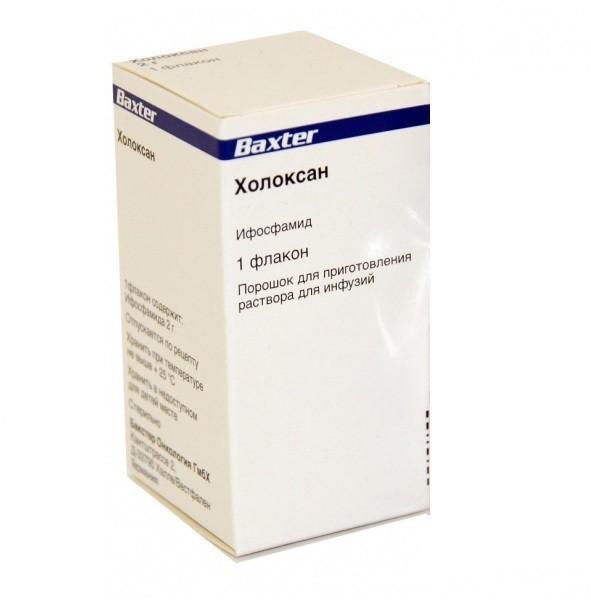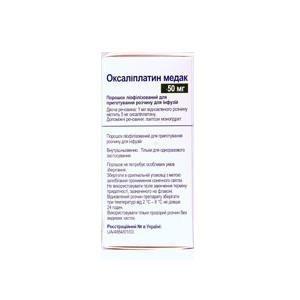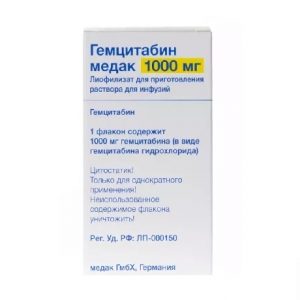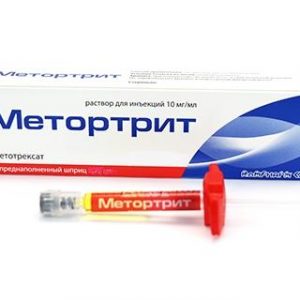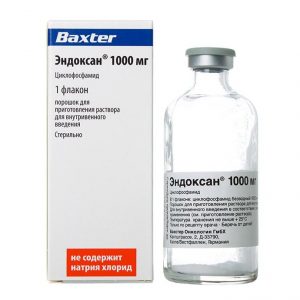Description
Latin name
HOLOXAN
Release form
Powder for the preparation of a solution for iv administration.
Packaging
In a bottle of 2 g of powder. In a cardboard box 1 bottle.
Pharmacological action
Pharmacodynamics
Ifosfamide is an alkylating cytostatic agent from the group of nitrogen mustard, a derivative of oxazaphosphorins. The antitumor activity of ifosfamide is due to the alkylation of nucleophilic centers, impaired DNA synthesis and the blocking of mitotic division of tumor cells. DNA damage most often occurs in phases G1 and G2 of the cell cycle.
Pharmacokinetics
After iv administration of the active substance, which is a prodrug (inactive transport form), is metabolized to the pharmacologically active metabolite 4-hydroxyphosphamide. It is activated by enzymes (phosphoamidases) of the liver and tumor tissue. In patients with impaired liver function, activation is slowed down and even reduced.
After a single iv injection of 5 g / m2, the plasma concentration decreases bio-exponentially, with T1 / 2 of the final phase – 15 hours and the removal of 61% of the dose unchanged at lower doses (1.6-2.4 g / m2), excretion monoexponentially, with T1 / 2 about 7 hours, while the proportion of unchanged drug in the urine is reduced by 4-5 times (12-18% of the dose).
Germ cell ovarian tumors
malignant testicular tumors, lung cancer breast cancer
pancreatic cancer endometrial cancer
cervical cancer
malignant lymphoma, soft tissue sarcoma
osteogenic sarcoma
Wilms tumor
Ewing’s sarcoma. Indications
Contraindications
Severe suppression of bone marrow function
severe renal impairment
urinary tract obstruction
cystitis
pregnancy
lactation
hypersensitivity to ifosfamide.
Precautions: hypoproteinemia, hypoalbuminemia, electrolyte imbalance, old age, immunosuppression, diabetes mellitus, chronic liver failure, brain metastases, cerebral symptoms, chickenpox (including recent or after contact with patients), herpes zoster herpes, acute infectious diseases.
Use during pregnancy and lactation
The drug is contraindicated in pregnancy and lactation.
Dosage and administration of
Ifosfamide is part of many chemotherapeutic treatment regimens, and therefore, when choosing a regimen and dose in each individual case, one should be guided by the data of the specialized literature.
The drug is administered intravenously in a drip for 30 minutes or as a 24-hour infusion. Use a solution with a concentration of not higher than 4%.
1.2-2, 4 g / l / day for 3-5 consecutive days or every other day until the total course dose of 10-12 g / m2, courses are repeated every 3 weeks
3-5 g / m2 once every 2 weeks
5-8 g / m2 as a 24-hour infusion once every 3-4 weeks or 3.2 g / m2 / day as a 5-day continuous infusion with an interval of 3-4 weeks.
To reduce the likelihood of hemorrhagic cystitis simultaneously with ifosfamide, mesna is used in a total dose of 60% of the dose of ifosfamide.
Preparation of a solution for iv administration
The powder in the vials is dissolved in water for injection to obtain a concentration of 40 mg / 1 ml.
For iv administration over 30 minutes, the resulting solution is diluted in 500 ml of 0.9% sodium chloride solution, Ringer’s solution or 5% dextrose solution.
For administration of the drug as a 24-hour infusion, the resulting solution of the drug is diluted in 3 l of a 0.9% sodium chloride solution or 5% dextrose solution. Ifosfamide and Mesna can be mixed in the same infusion solution.
Side effects
From the hemopoietic system: leukopenia, thrombocytopenia, anemia. The lowest white blood cell and platelet count is observed after 7-14 days, restoration of the blood picture usually occurs 21 days after the end of the course.
From the digestive system: nausea and vomiting rarely – stomatitis, impaired liver function, usually manifested as an increase in the activity of liver enzymes and / or serum bilirubin level.
From the urinary system: hemorrhagic cystitis, dysuria, frequent urination and other symptoms of bladder inflammation (blood in the urine, painful urination), impaired renal function (increased concentration of creatinine and urea in the blood serum, decreased creatinine clearance. glucosuria). Proteinuria and metabolic acidosis may also occur.
From the side of the central nervous system: disorientation, confusion, hallucinations, increased fatigue, agitation, encephalopathy less often – dizziness rarely – convulsive seizures, coma, peripheral polyneuropathy.
From the reproductive system: dysfunction of the gonads (azoospermia, amenorrhea).
From the skin and skin appendages: reversible alopecia, photosensitivity.
Local reactions: redness, swelling, or pain at the injection site.
Other: cardiotoxic effect, immunosuppression, infectious complications, slowing of the rate of wound healing, pulmonary symptoms (cough or shortness of breath), fever, allergic reactions.
Drug Interaction
When used with medicinal products that cause myelotoxic, neurotoxic and nephrotoxic effects, increased side effects may occur.
When combined with inducers of microsomal liver enzymes, the formation of alkylating metabolites may increase.
When used simultaneously enhances the hypoglycemic effect of anti-diabetic drugs.
Allopurinol enhances myelosuppression.
Meat reduces nephrotoxicity. Ifosfamide can enhance the skin’s response to radiation.
Concomitant administration of warfarin may reduce blood coagulation and increase the risk of bleeding.
overdose
Symptoms: faster development and more pronounced side effects.
Treatment: symptomatic, with obligatory use of Mesna.
Storage conditions
Store at a temperature not exceeding 25 ° C out of the reach of children.
Store the prepared solution at a temperature not exceeding 8 ° C.
Expiration
5 years.
The reconstituted solution should be used within 24 hours.
Dispensing conditions from
pharmacies Prescription
Dosage Form A dosage form
infusion solution
